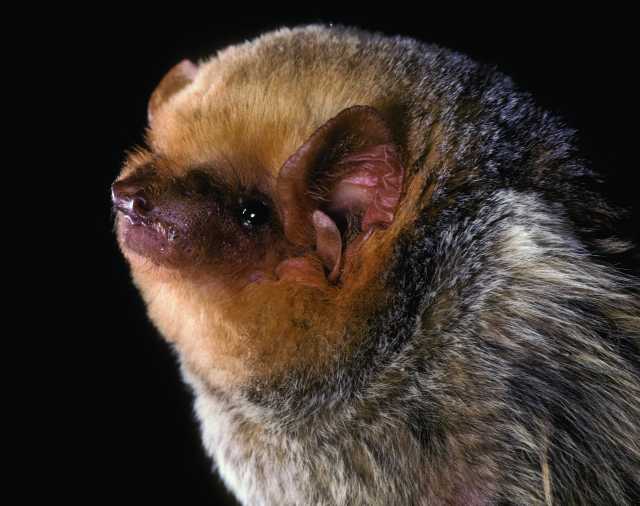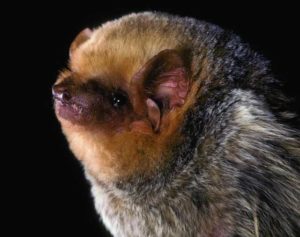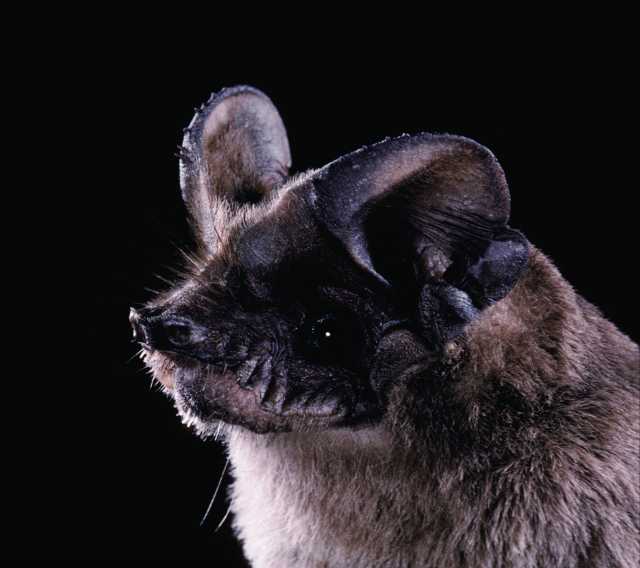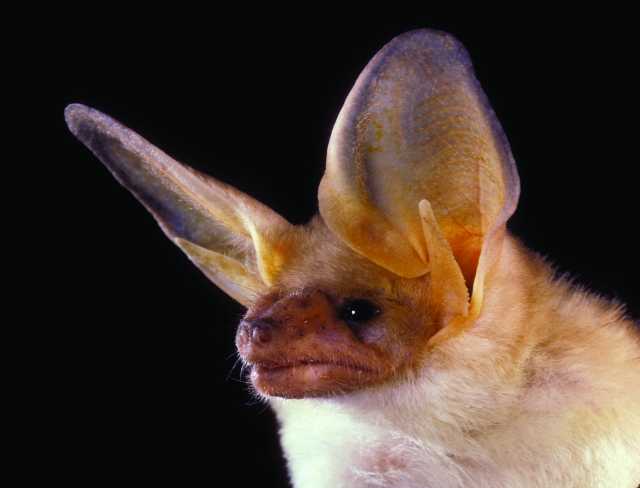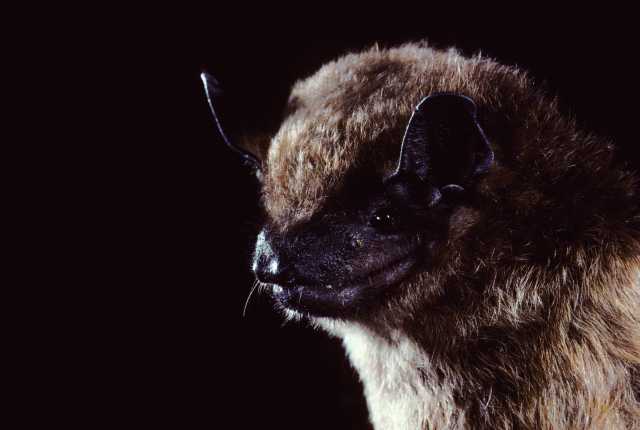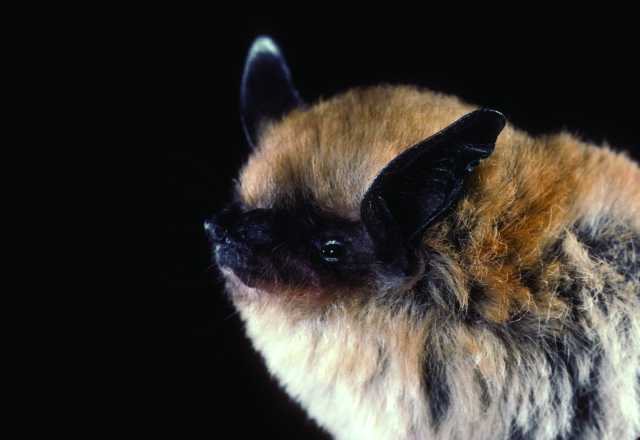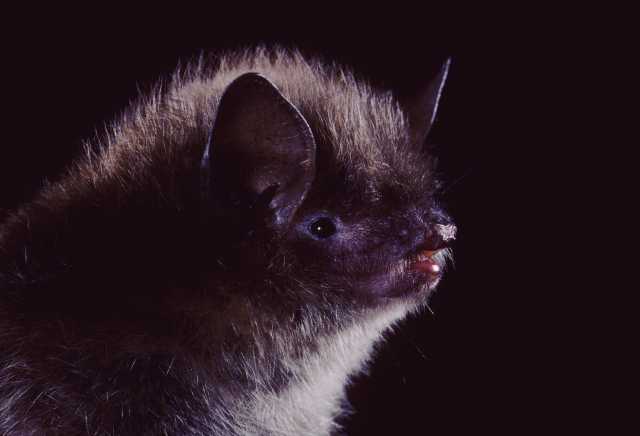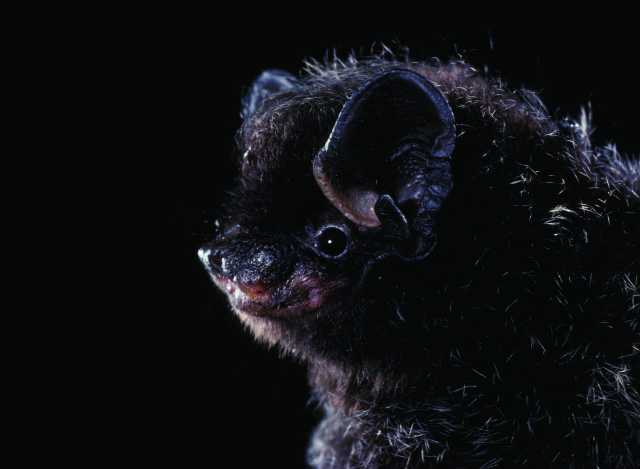Western Red Bat (Lasiurus blossevillii)
Description: Body length about 4″, with an 11-13″ wingspan. Orange-brown to yellow-brown fur with a fully furred tail membrane. Long pointed wings. Short rounded ears.
Range: The western red bat occurs in the western United States from the western edge of the Great Plains to the Pacific Ocean (although it is mostly absent from the Great Basin); from northern California, southern Idaho, and southern Wyoming south to the U.S.-Mexico border including Arizona, New Mexico, and western Texas. South of the US-Mexico border, the Western Red Bat occupies much of Mexico excluding the Mexican Plateau and coastal areas abutting the Gulf of Mexico and the Caribbean.
There are two red bats in North America, the Western Red Bat and the Eastern Red Bat. Originally it was thought that the species were separated by the Continental Divide. However, recent studies have determined that some old records of bats taken in California that formerly were thought to be that of the Western Red Bat have been confirmed genetically as actually being Eastern Red Bats, so we now think that both species may occur in California. Current distribution records that the Eastern Red Bat range may be expanding into California from the north and east.
Habitat: Edge habitats of forest, rivers, fields and urban areas. Roost in trees, generally in the open, like a hanging piece of fruit, but with incredible camouflage. Roost in leaf litter in the winter.
Diet: Peak activity one to two hours after sunset. Eats moths, beetles, flying ants and other insects.
Behavior: Fast, strong fliers at treetop to a few feet above the ground. Hangs by one foot with head tucked in furry tail membrane. Gives birth to up to 4 pups. If the mother has to move with her pups, she may become grounded due to weight of pups and unable to return with pups a roost. Predators: Scrub Jays, falcons, hawks, owls, opossums and domestic cats.
Risks: Loss of riparian zones, pesticide use in orchards and controlled burns of leaf litter.

